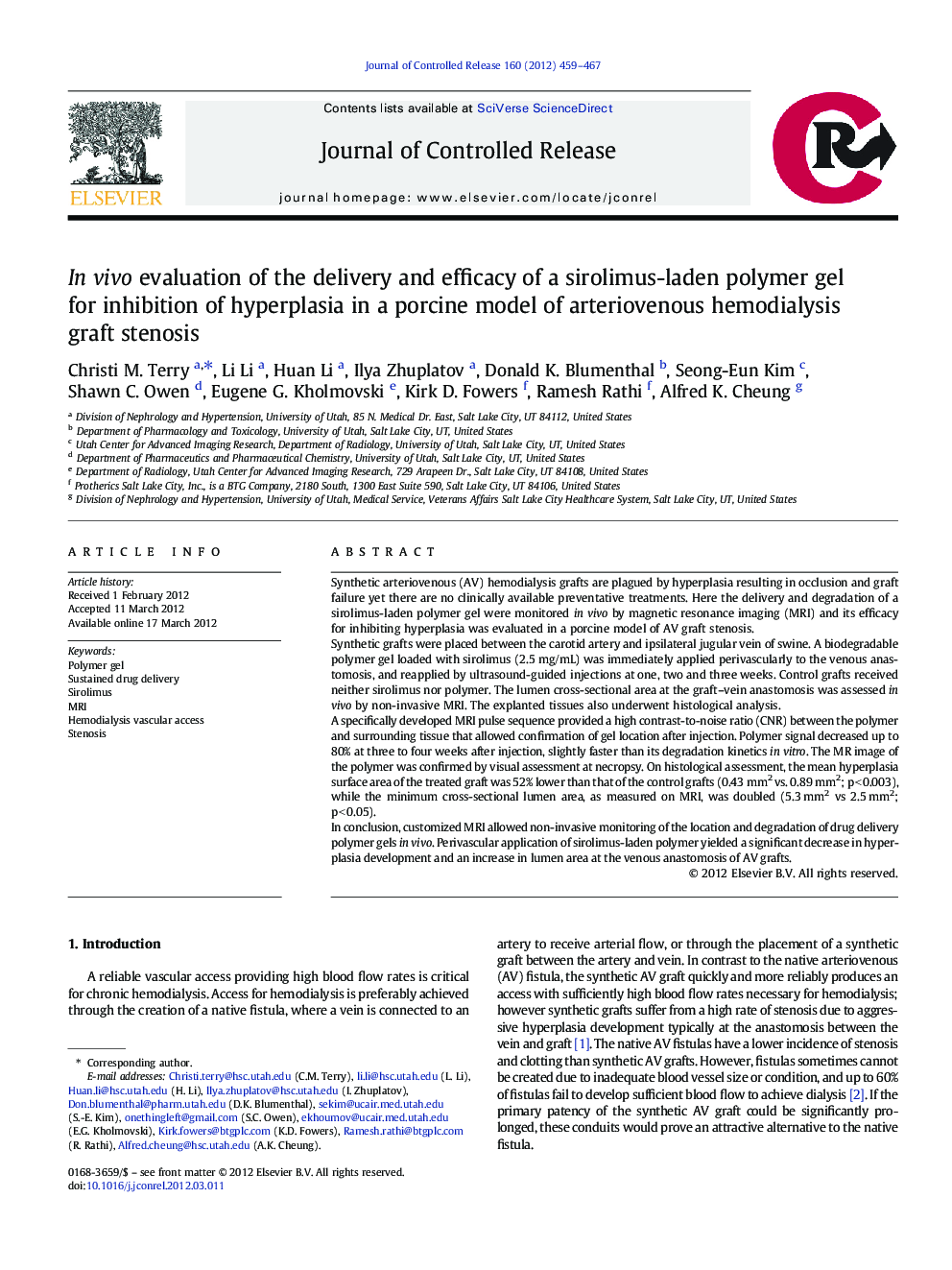| کد مقاله | کد نشریه | سال انتشار | مقاله انگلیسی | نسخه تمام متن |
|---|---|---|---|---|
| 1424493 | 1509079 | 2012 | 9 صفحه PDF | دانلود رایگان |

Synthetic arteriovenous (AV) hemodialysis grafts are plagued by hyperplasia resulting in occlusion and graft failure yet there are no clinically available preventative treatments. Here the delivery and degradation of a sirolimus-laden polymer gel were monitored in vivo by magnetic resonance imaging (MRI) and its efficacy for inhibiting hyperplasia was evaluated in a porcine model of AV graft stenosis.Synthetic grafts were placed between the carotid artery and ipsilateral jugular vein of swine. A biodegradable polymer gel loaded with sirolimus (2.5 mg/mL) was immediately applied perivascularly to the venous anastomosis, and reapplied by ultrasound-guided injections at one, two and three weeks. Control grafts received neither sirolimus nor polymer. The lumen cross-sectional area at the graft–vein anastomosis was assessed in vivo by non-invasive MRI. The explanted tissues also underwent histological analysis.A specifically developed MRI pulse sequence provided a high contrast-to-noise ratio (CNR) between the polymer and surrounding tissue that allowed confirmation of gel location after injection. Polymer signal decreased up to 80% at three to four weeks after injection, slightly faster than its degradation kinetics in vitro. The MR image of the polymer was confirmed by visual assessment at necropsy. On histological assessment, the mean hyperplasia surface area of the treated graft was 52% lower than that of the control grafts (0.43 mm2 vs. 0.89 mm2; p < 0.003), while the minimum cross-sectional lumen area, as measured on MRI, was doubled (5.3 mm2 vs 2.5 mm2; p < 0.05).In conclusion, customized MRI allowed non-invasive monitoring of the location and degradation of drug delivery polymer gels in vivo. Perivascular application of sirolimus-laden polymer yielded a significant decrease in hyperplasia development and an increase in lumen area at the venous anastomosis of AV grafts.
Figure optionsDownload high-quality image (191 K)Download as PowerPoint slide
Journal: Journal of Controlled Release - Volume 160, Issue 3, 28 June 2012, Pages 459–467